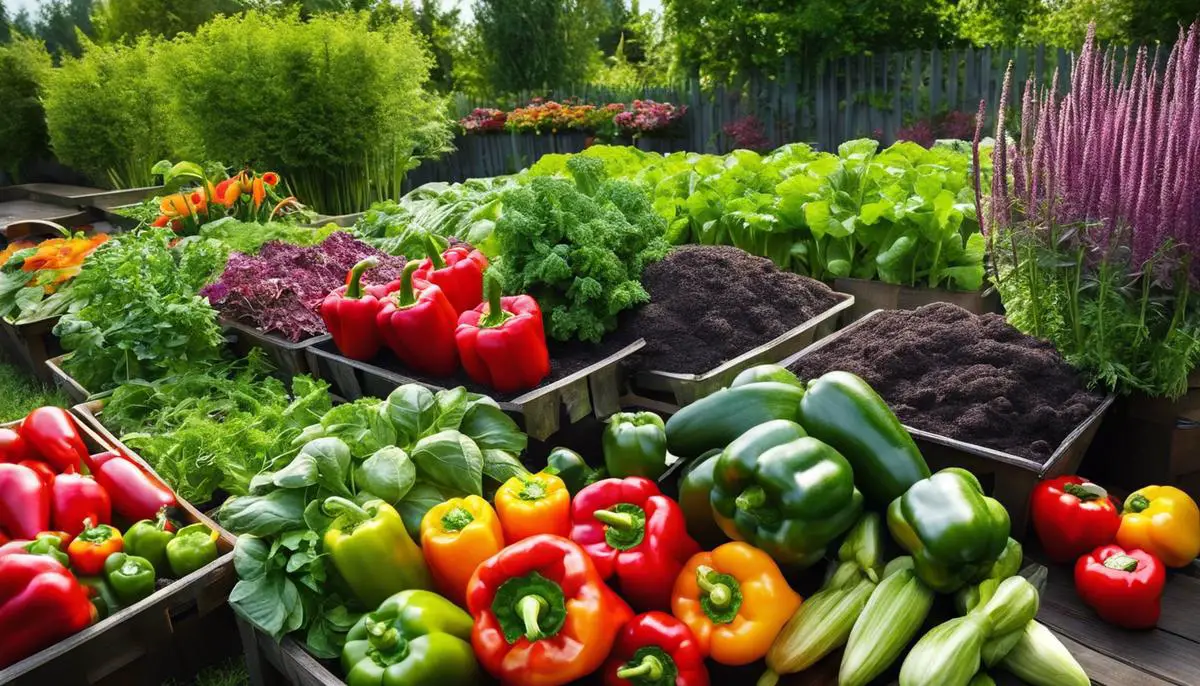In our quest for a fruitful and sustainable garden, we often overlook a simple, yet powerful strategy — companion planting. This ingenious approach to horticulture is by no means new; it’s a tradition that has been passed down through generations. At its core, companion planting leverages the mutually beneficial associations between different plant species to promote health and vigor. And when it comes to growing bell peppers, understanding this concept can pave the way for remarkable results. This topic explores this ancient practice, the best companion plants for bell peppers, potential pitfalls to avoid, and helpful guidance for maximizing these symbiotic relationships.
Understanding the concept of companion planting
Digging into the world of gardening, one might stumble across a curious phrase – “companion planting”. For those who haven’t journeyed down this particular garden path yet, don’t fret. This concept is about as friendly as it sounds. Apply it well, and the rewards are bountiful – especially when growing bell peppers.
Reader Poll: What online courses would interest you?
Put simply, companion planting involves planting different varieties of plants close together for mutual benefit. Think of it as neighborhood camaraderie among plants, where one plant helps another grow better, ward off pests or maximize space. The practice dates back centuries and is a staple in organic and biointensive gardening.
Now, why bring bell peppers into this friendly equation? Bell peppers, those vibrant, crunchy veggies we love in our salads and stir-fries are known for being a tad sensitive. They require precise conditions – warm soil, plenty of sunlight, and well-drained soil – to thrive. Not only that, they are susceptible to pests like aphids, beetles, and leafminers. This is where their plant friends come in.
In companion planting, the pepper plants align well with several ‘friends’ that keep pests at bay and improve overall growth. Some major players are basil, onions, spinach, and carrots.
Subscribe to our newsletter!
Basil, with its strong scent, is a genuine deterrent to many pests that prey on pepper plants. So while the basil is wafting its potent aroma, your bell peppers can grow in peace, free from nagging insects.
Onions are another excellent companion for bell peppers. They repel the infamous cabbage looper, a pest known for its fondness of snacking on pepper plants.
Spinach, as a low-growing plant, can provide a nice ground cover around bell pepper plants. This can help deter weed growth and maintain moisture levels in the soil.
Similarly, carrots benefit bell peppers by breaking up the soil around their roots, allowing for better water penetration. The bell peppers, taller than their carrot companions, provide a bit of shade in return.
But, as with any good neighborhood, there are some bad apples. For bell peppers, fennel and kohlrabi are two plants to avoid. Both have been observed to hinder the growth of bell pepper plants.
So, if the idea of creating a harmonious, thriving vegetable garden wins favor, consider companion planting. Equip that green thumb with a bit of knowledge on which plants rub along well together and watch that bell pepper flourish in the company of its helpful neighbors. Who knew gardening could be such a community affair?
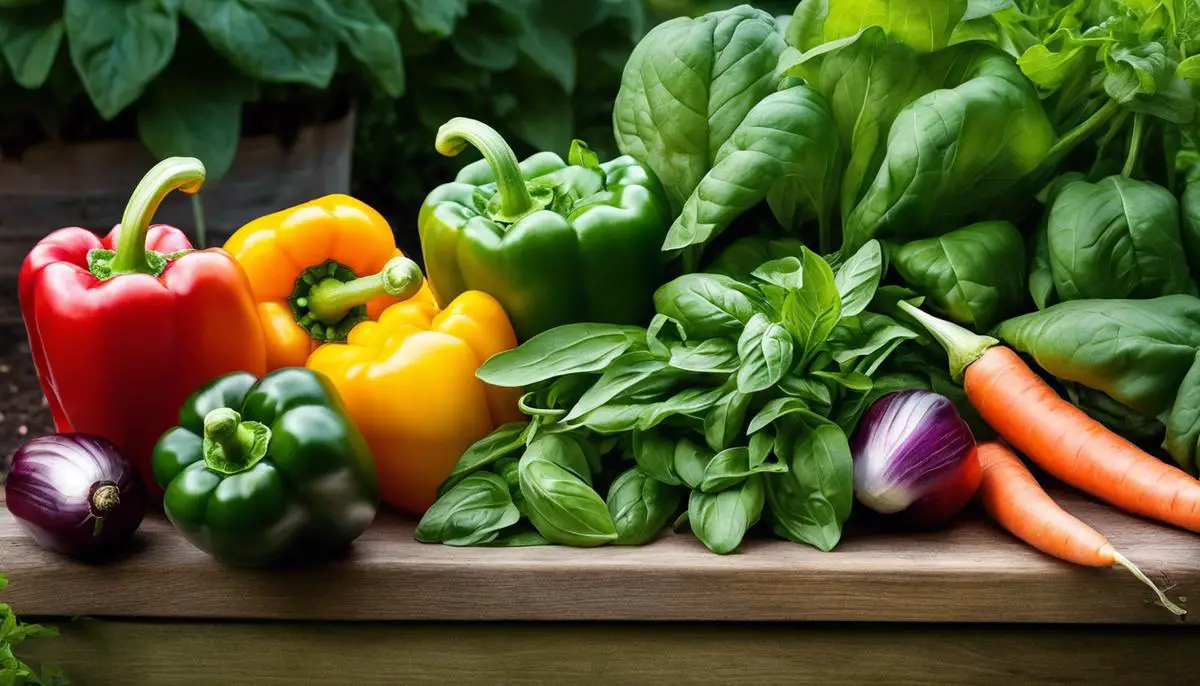
Best companion plants for bell peppers
Diving further into the world of companion planting, there are certain star players that make all the difference in a bell pepper garden. Beyond just basil, onions, spinach, and carrots, there are several other plants that prove to be incredibly beneficial for a bell pepper garden. In fact, these companion plants provide a myriad of benefits, from enhancing growth, increasing yield, to warding off pests. Here’s a closer look:
Marigolds:
These vibrant flowers are not just pretty to look at, they bring a lot to the table when planted alongside bell peppers. Marigolds emit a strong scent that’s a potent deterrent for several garden pests, including nematodes, which are detrimental to bell peppers. Thus, pairing marigolds with bell peppers is like having your personal, all-natural pest control.
Beans:
These hardy plants are known to be excellent companions for many vegetables, bell peppers included. Beans, especially climbing varieties, offer the added bonus of acting as windbreaks, thus protecting your bell peppers from wind damage. What’s more, beans are natural nitrogen fixers – they draw nitrogen from the air and convert it into a form that plants can use directly. This means richer soil and healthier, more productive bell peppers.
Tomatoes:
Tomatoes and bell peppers thrive in the same conditions, so they make great garden companions. Their shared preference for full sun, and warm soil makes them an effortless pairing. Not only do tomatoes provide convenient shade for the bell peppers against harsh afternoon sun, but they also share many of the same pest enemies. This allows for more efficient pest control.
Parsley:
This humble herb may surprise you with its companion gardening benefits. Parsley attracts beneficial insects to the garden, such as hoverflies and parasitoid wasps, which keep aphids and thrips in check – common pests for bell peppers. By growing parsley nearby, it creates a mini ecosystem where good bugs help keep the pest population under control.
Petunias:
If you’re looking for a decorative companion plant that packs a pest control punch, look no further than petunias. These lovely flowers are proven to deter a host of common pests, including leafhoppers and tomato worms, making them an excellent addition to any bell pepper garden.
In the end, effective companion planting is about finding the perfect balance where each plant benefits the other in some way. It’s clear from this discussion that integrating a variety of plants such as marigolds, beans, tomatoes, parsley, and petunias with your bell peppers can result in a healthier, more productive garden. Remember, a vibrant garden is not just about a single plant, but an entire community thriving and growing together.
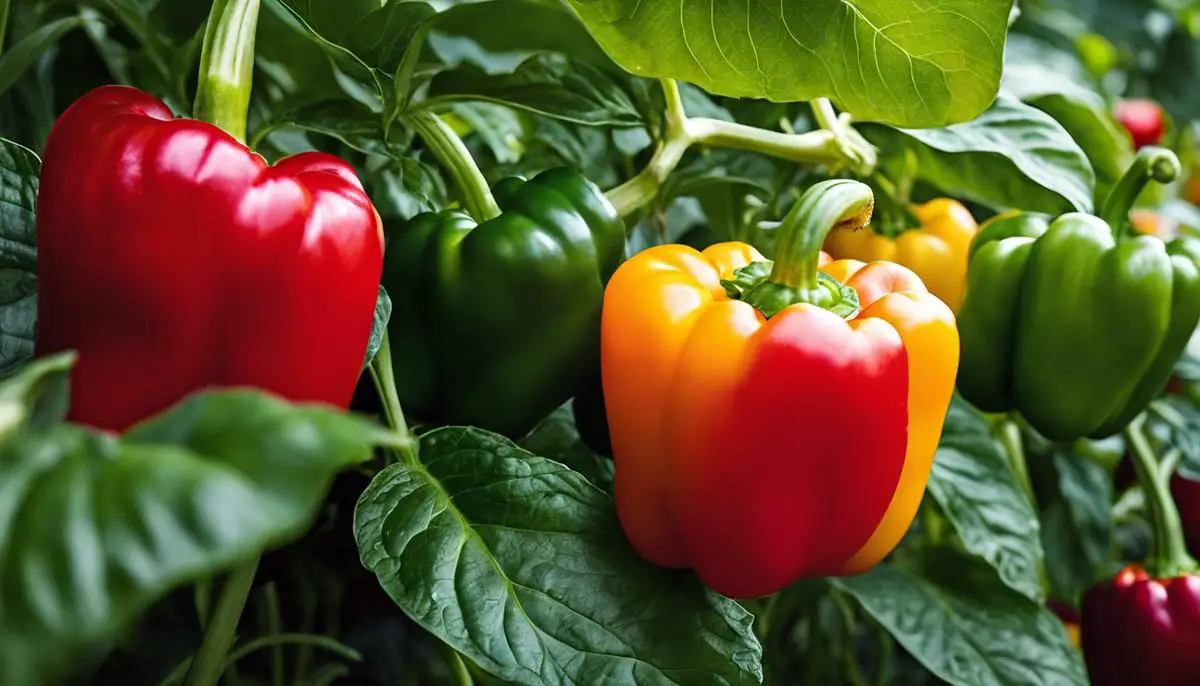
Avoiding incompatible plants with bell peppers
While the idea of companion planting has been extensively discussed in previous sections, and why it is beneficial for bell peppers, it’s also imperative to cast light on certain plants that could pose a threat to their fruitful growth. This may come as a surprise, as most plants typically foster symbiotic relationships. However, some plants could potentially hinder the optimum growth of bell peppers.
A prime example of such detrimental plant relationships involves plants from the Brassica family. This includes vegetables like cabbage, broccoli, and cauliflower. Their growth pattern and nutrient needs can put excessive stress on nearby bell peppers, impairing their growth and fruit production. If these aforementioned veggies are in your garden mix, make sure to allocate sufficient space between them and your bell peppers.
Next up, plants with vigorous growth habits like pumpkins, squash, and watermelon can also pose a problem. These vigorous growers invade other plants’ space, leading to competition for sunlight and nutrients in the soil. This results in a negative impact on bell pepper plants. So, unless you have an ample amount of gardening space, it’s a smart strategy to keep these vigorous growers well away from your bell peppers.
Lastly, we have plants that belong to the Solanaceae family, where the bell peppers also belong. This includes potatoes and eggplants. They are notorious for having similar insect and disease issues. Planting them close together might improve the odds of these issues spreading from one plant to another, which can jeopardize the health of your bell peppers.
While it’s important to remember these exceptions to the companion planting rule, don’t let these discourage you thoroughly. Gardening, after all, is all about trial, error, and constant learning! Figuring out the “do’s and don’ts” is part of the amazing journey. Plant diversity is beneficial for overall garden health, it’s just a matter of finding the right balance. After all, the goal is to create a harmonious environment where all plants can share space, grow, and thrive together in your fruitful garden.
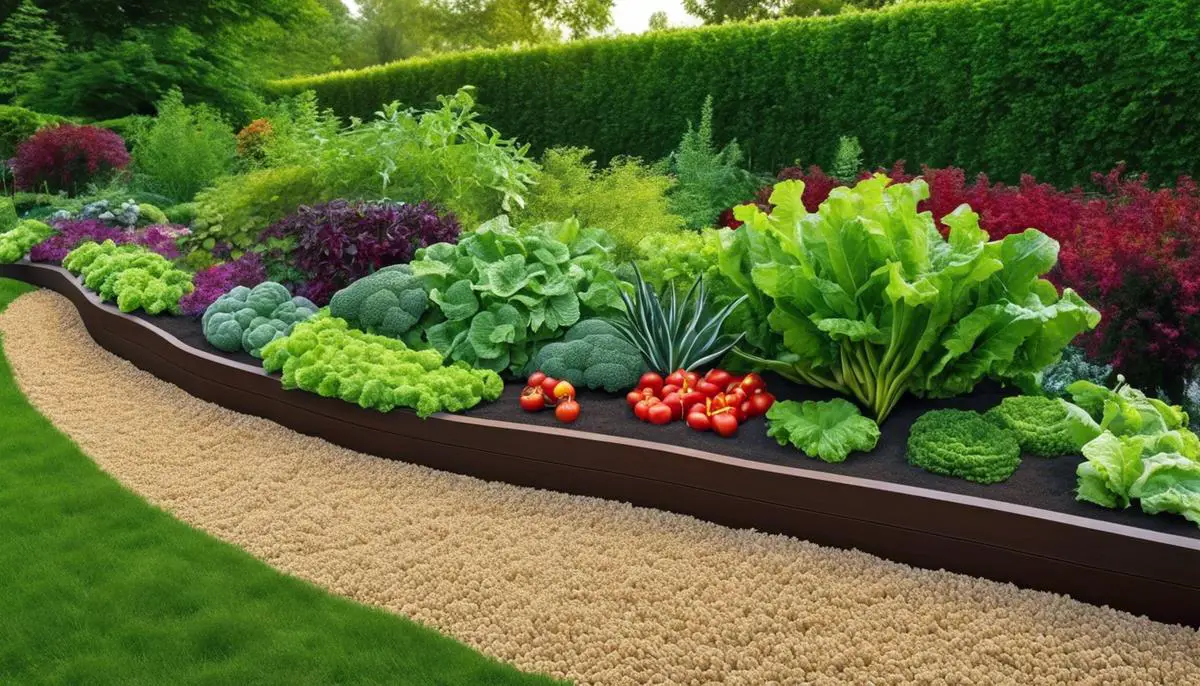
Recommendations for properly implementing companion planting
Incorporating companion planting to your bell pepper garden can lead to an abundance of successful harvests. There are, however, a few more factors and plants to consider to ensure this success.
While we have talked about the beneficial companions for bell peppers, Marigold deserves a separate discussion for its unique pest control properties. They are not just pretty to look at but these beauties emit a strong aroma that bugs detest—making them a garden’s trusted pest controller.
Another plant worth planting alongside your bell peppers is beans. Beans can serve as robust windbreakers guarding your somewhat delicate pepper plants against harsh winds. They also promote a healthier soil environment through nitrogen fixation – a process where the atmospheric nitrogen gets converted into a form that plants can use for their growth.
Tomatoes work well too! They share a good affinity with bell peppers, owing to their similar growth requirements. Thus, tomatoes can serve as ideal companions for your bell peppers, and together they can create a real salsa garden.
Don’t forget about parsley! It has this unique ability to attract beneficial insects that can ultimately help you control the pests on your bell pepper plants.
For those gardeners who also love a visual appeal in their garden, petunias can certainly add that while also providing noted pest control benefits for bell peppers.
Companion planting is truly about more than just pest control or soil health; it’s also about maintaining balance. Every garden requires a harmonious environment where the plants work together for a common good.
However, not all plants make good neighbors. By contrast, plants from the Brassica family such as cabbage, broccoli, and cauliflower may not be tolerated well by bell peppers.
Similarly, avoid planting vigorous growers like pumpkins, squash, and watermelon near your bell peppers. These plants can become overly aggressive, fighting for sunlight and nutrients, ultimately taking away from your bell peppers.
It’s also advised to be wary of planting potatoes and eggplants close to bell peppers. Being from the same family, Solanaceae, they are prone to similar diseases and insects, which can potentially spread to your bell peppers.
True and tested methods count in gardening, but don’t be afraid to experiment. What works in one garden might not work in another. Trial and error, coupled with constant learning, can lead to the creation of a perfectly balanced and harmonious environment where your bell peppers, as well as the other plants, can flourish together. So, go ahead and let your bell peppers enjoy the company of some new, beneficial neighbors this season!
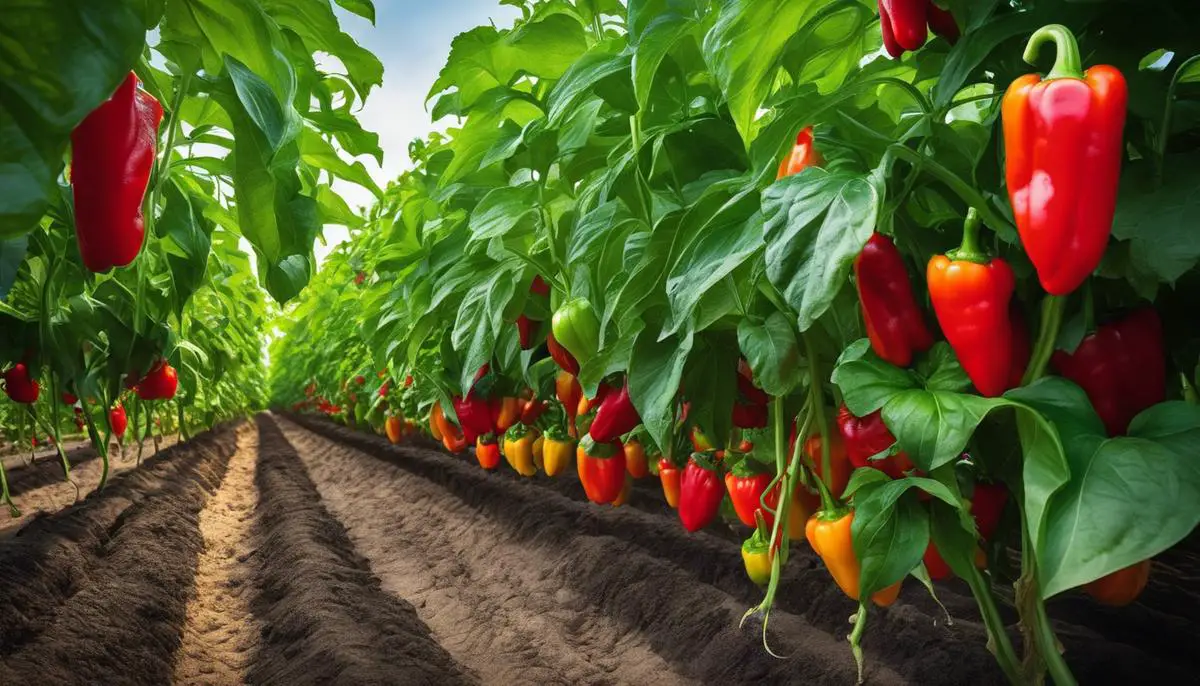
Indeed, companion planting opens up a whole new path to make your bell pepper garden flourish. By carefully selecting compatible plants that can support and complement the growth of your bell peppers, you can enhance yields and create a more resilient garden ecosystem that lessens the need for chemical pesticides. Simultaneously, steering clear of incompatible plants can spare your bell peppers from unnecessary stress and competition. As you put these insights into practice, remember that successful companion planting largely hinges on accurate placement and rotation strategies. Embrace this time-tested approach and watch as your bell peppers thrive in a community of thriving, mutually beneficial plants.

